🕒 Date of last update of the article: 10.02.2024 at 9:19 p.m | 🖋 Author: Viktor Shatrov
Надсилайте актуальну інформацію та отримуйте більше цільових клієнтів. Ми розмістимо ваш об’єкт у нашому каталозі та покажемо поруч із локаціями, а також у загальному каталозі, це безкоштовно!
🕒 Date of last update of the article: 10.02.2024 at 9:19 p.m | 🖋 Author: Viktor Shatrov
Comfortable walk through the historic city center. The route is built in such a way that it passes not only through the historical part, but also through interesting places – souvenir shops, promenades, shops and cafes.

The temperature in Uzhgorod is now:
Content
Map with a route of historical monuments, where you can also use movies and choose cafes, entertainment, hotels and other places near you. .
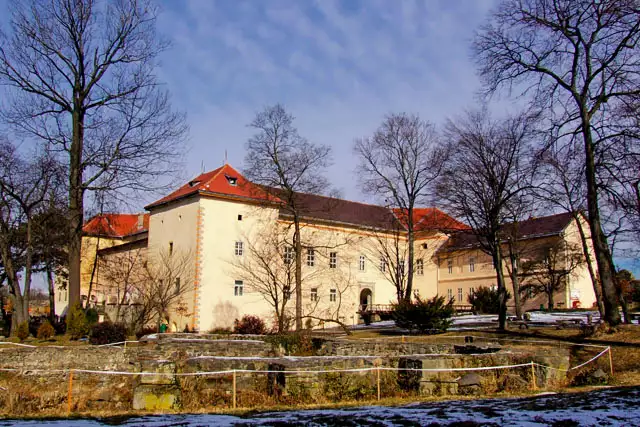
It is from the first mention in the IX century about the fortress of Prince Laborts that the history of Uzhgorod begins. Later stone fortifications were built. During the Middle Ages, the castle belonged to the Druget family. From 1775, the Greek Catholic Theological Seminary operated outside the castle. Now there is an exposition of the Transcarpathian Museum of Local Lore.
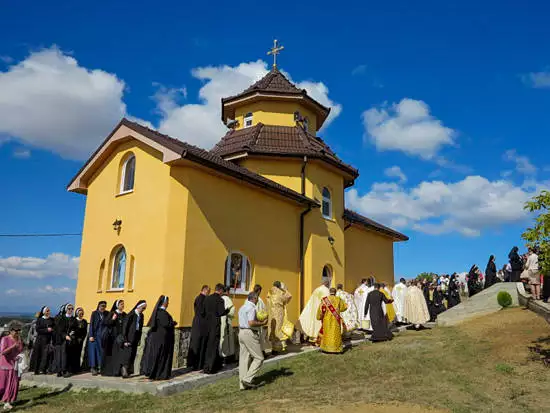
The monastery was built in 1912 on the site of the Greek Orthodox Church. The Greek Catholic monastery was engaged in educational activities, there was a gymnasium and a printing house. Now it is one of the faculties of Uzhgorod National University.
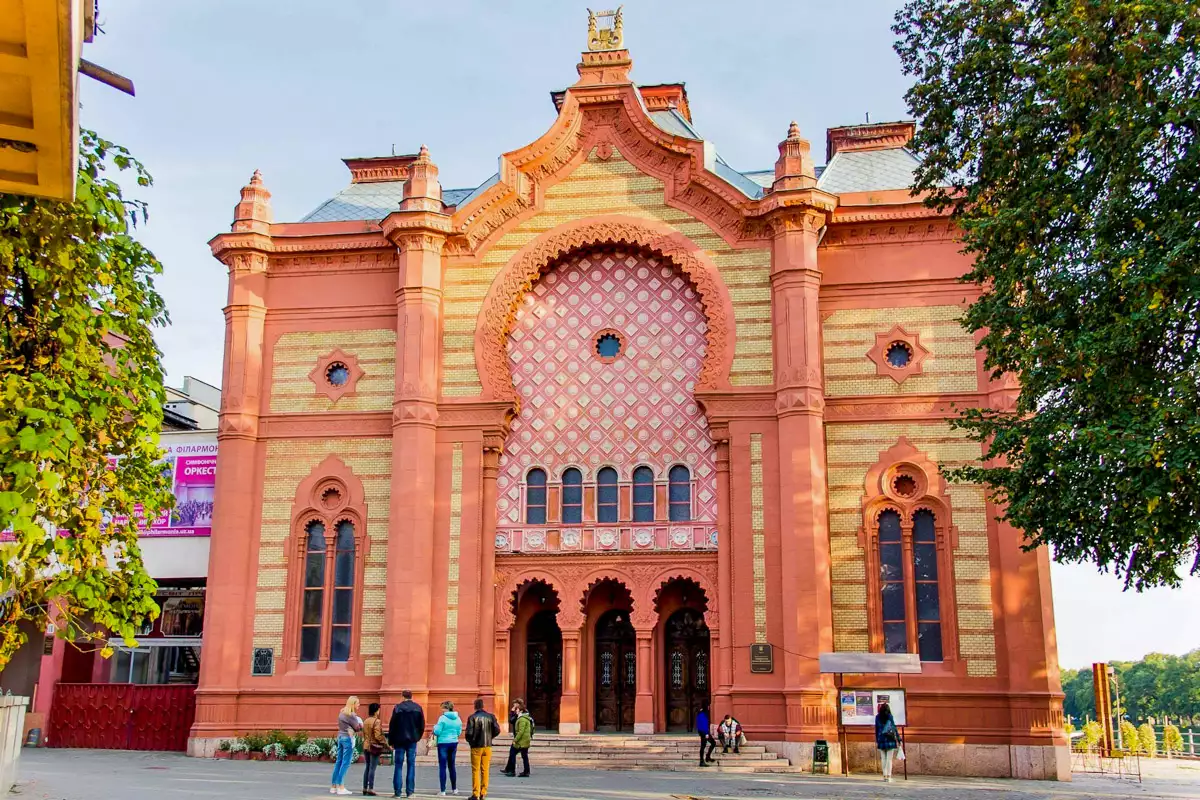
The building of the main Orthodox synagogue was built in 1904 in the neo-Moorish style. The synagogue was the center of religious and cultural life of the city’s Jewish community. Now the Philharmonic is located here. Nearby, a monument to Holocaust victims by sculptor Mykhailo Kolodko has been erected on the waterfront.
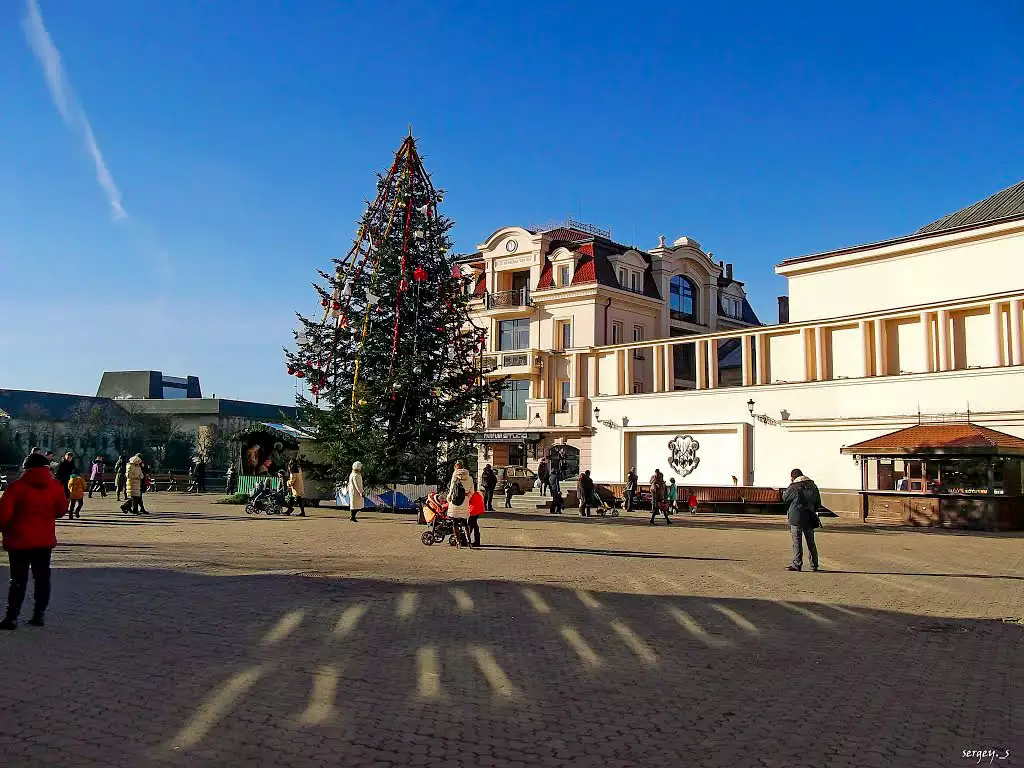
The square got its name from the building of the city theater, built in 1906. Now there is a puppet theater “Bavka”. Nearby you can see a monument to the artist Ignatius Roshkovich (1854-1915), who once lived in the city.
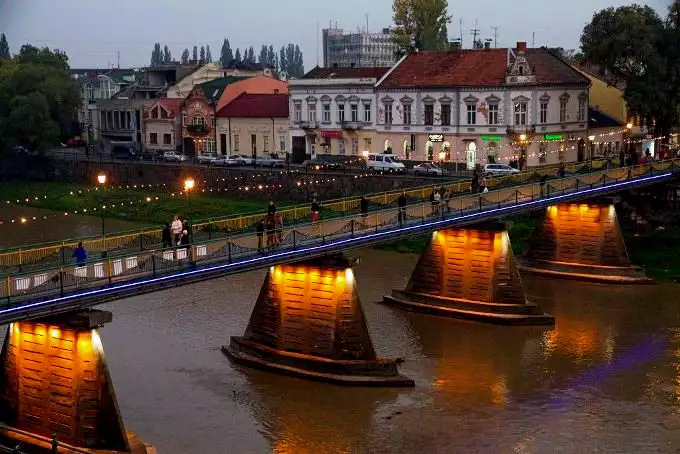
The bridge connects the left bank and the right bank of the city. The first mention of the bridge over the river Uzh dates back to the fourteenth century. In 1896 a metal bridge was built, which stood until the Second World War. Now it is restored and used as a pedestrian.
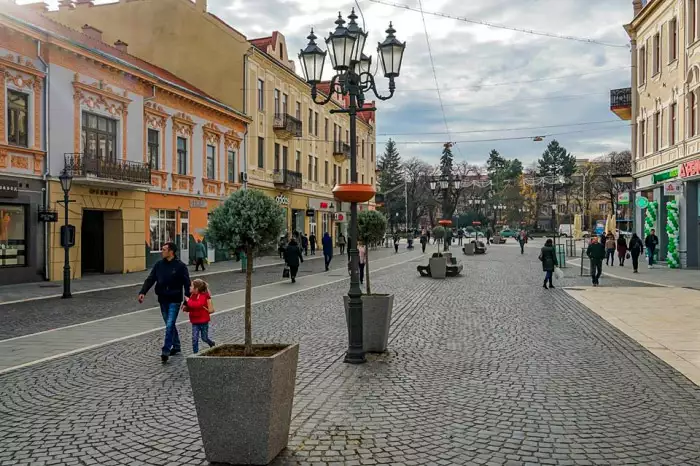
Petofi Square is located on the left bank of the river Uzh and began to be built in the XVIII century. Once there were city fairs, and in the 20s of the last century the square was laid out. During its history, the square has changed its name several times: Bazarna, Masaryk, Koshuth, Stalin, Reunification, and now it is named after the Hungarian poet Shandor Petefi. A monument to the poet is installed in the center of the square on the square.
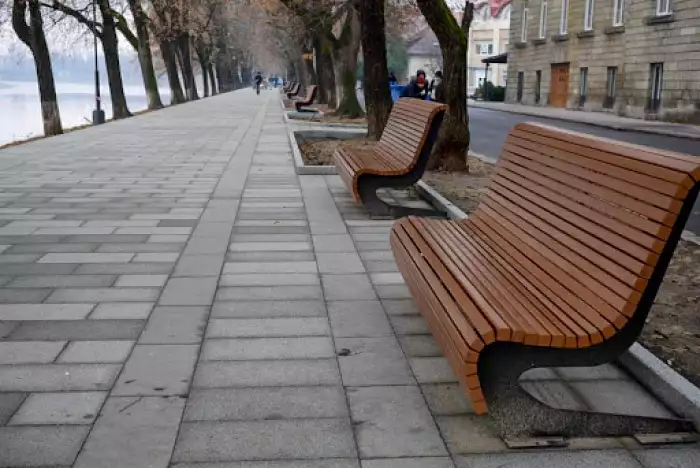
At the beginning of the embankment is the building of the Linguistic Gymnasium. T. Shevchenko, built in 1912, for a women’s city school. From here begins the Lime Alley, which is a natural monument of Uzhgorod.
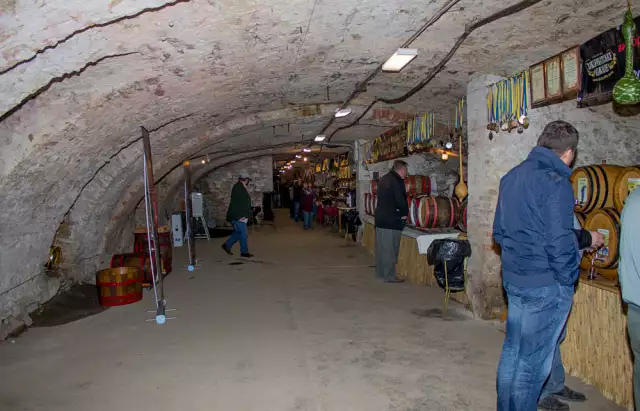
The historic building was erected in 1781 as basements and warehouses of the Uzhansky state dominion. Now, after reconstruction, there is a cultural and exhibition center, and wine festivals are held in the cellars.
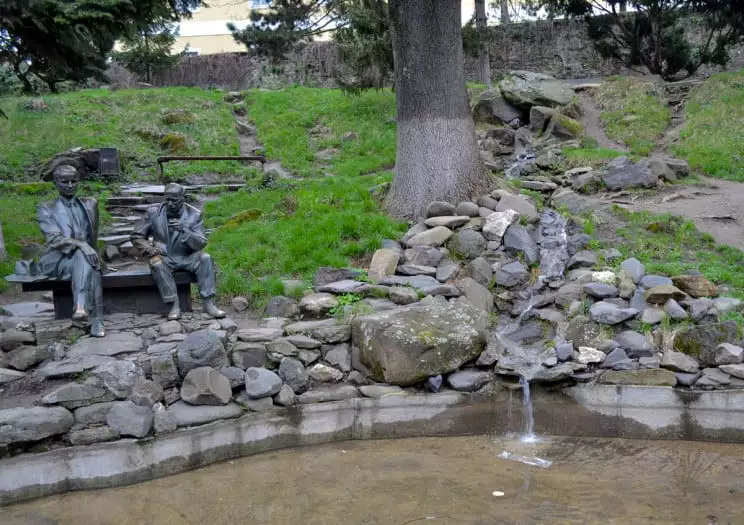
Erdely (1891-1955). These artists are the founders of the Transcarpathian school oA small park with alpine plants with man-made flow. It features a sculptural composition depicting Joseph Bokshay (1891-1975) and Adalbert f painting.
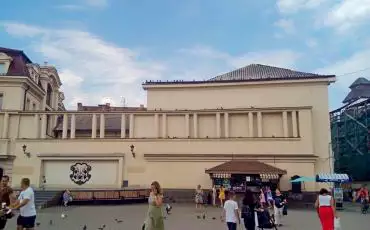
On the square there is a county house, an administrative building, built in 1809. Now it is an art museum named after J. Bokshaya. Nearby on the square are the Reformed Church (late eighteenth century), the former real school (early twentieth century) and synagogue of neologs (1872).
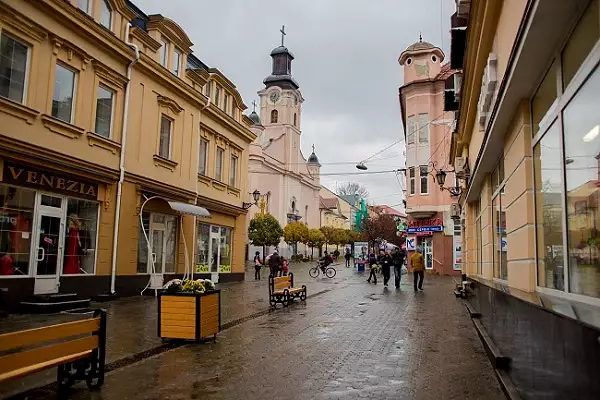
Corso Street is the main street in the city. The name comes from the Italian language and means a place for walks. Now the street is pedestrian. A complex of architectural structures of the late XIX and early XX centuries has been preserved here.
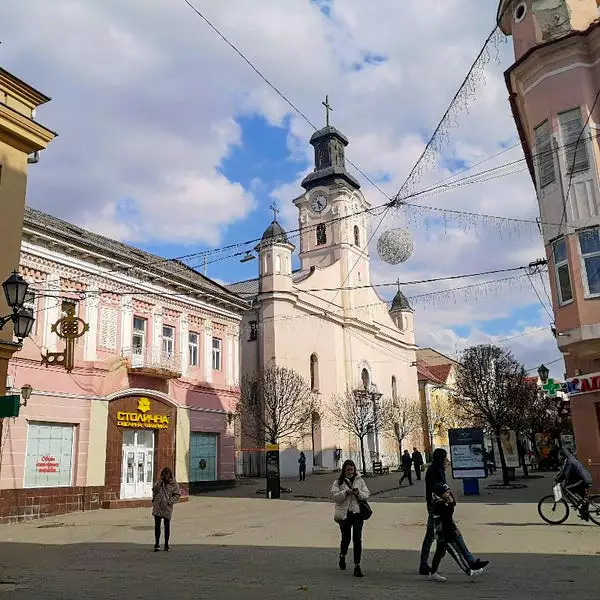
Roman Catholic Church of St. St. George’s was built in 1766-1768 on the site of an older temple. Nearby are the parish building and the Gisela House, which previously housed a Catholic school for girls.
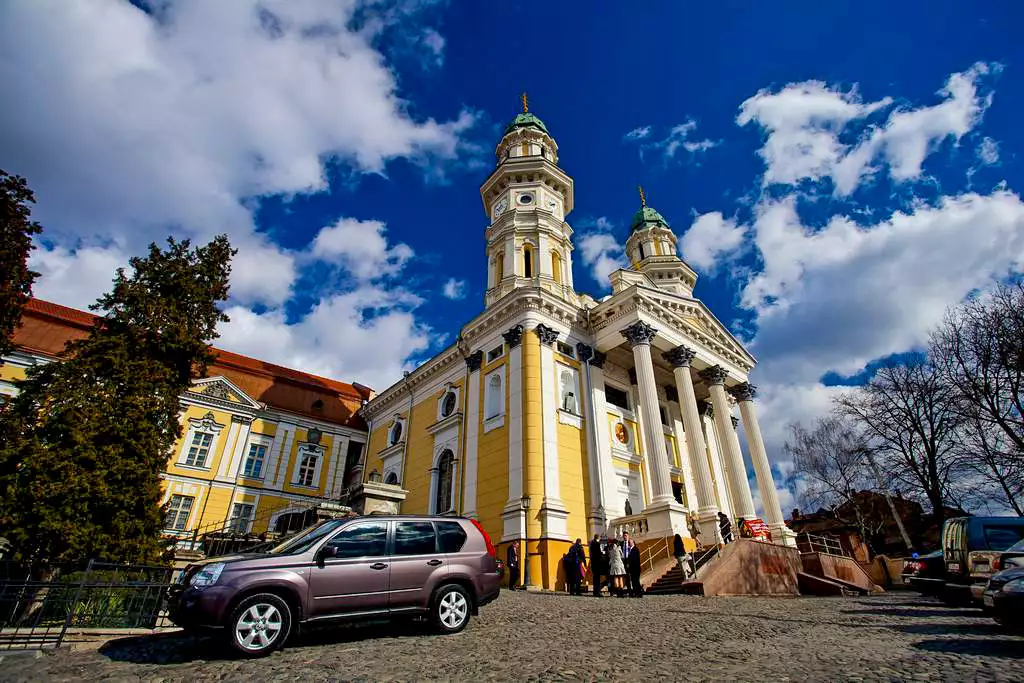
The history of the church began in the 17th century, when the owners of the town of Drugeti invited the Jesuit order to Uzhgorod. In 1646 a building for the Jesuit college and a church were built. In 1775, Empress Maria Theresa transferred the complex of buildings of the Greek Catholic Church, the episcopal residence was moved here from Mukachevo. The church was rebuilt several times and acquired its final appearance after reconstruction in 1876-1877. Now it is the main church of Greek Catholics in Transcarpathia.
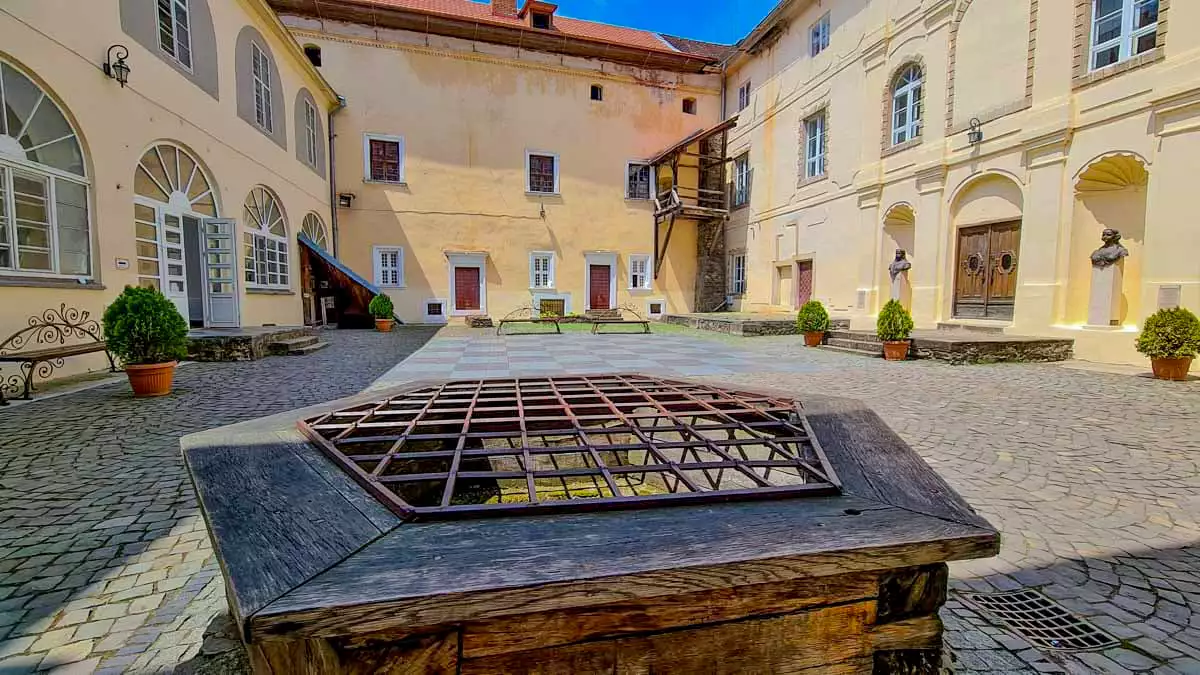
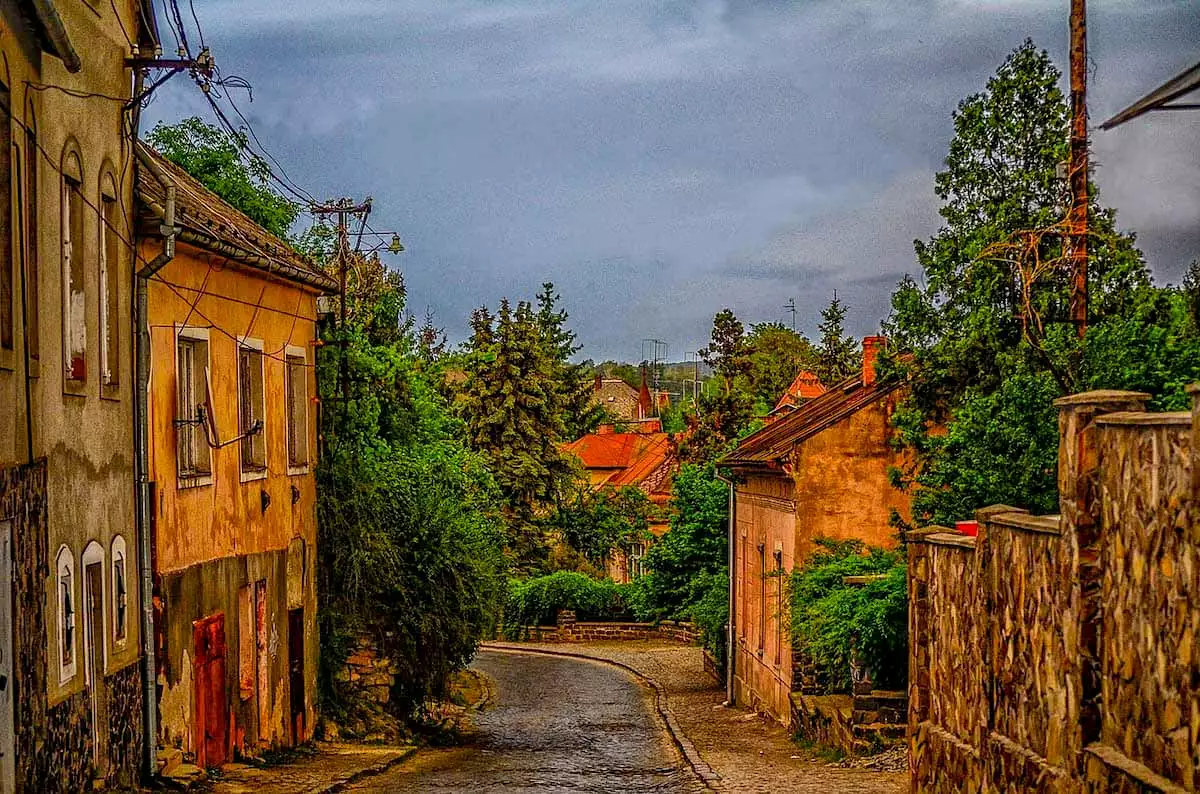
The length is 2.55 km.
On the way to:
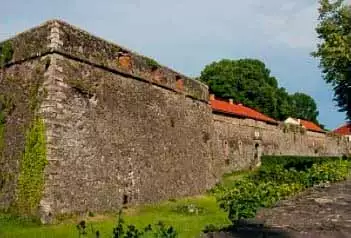
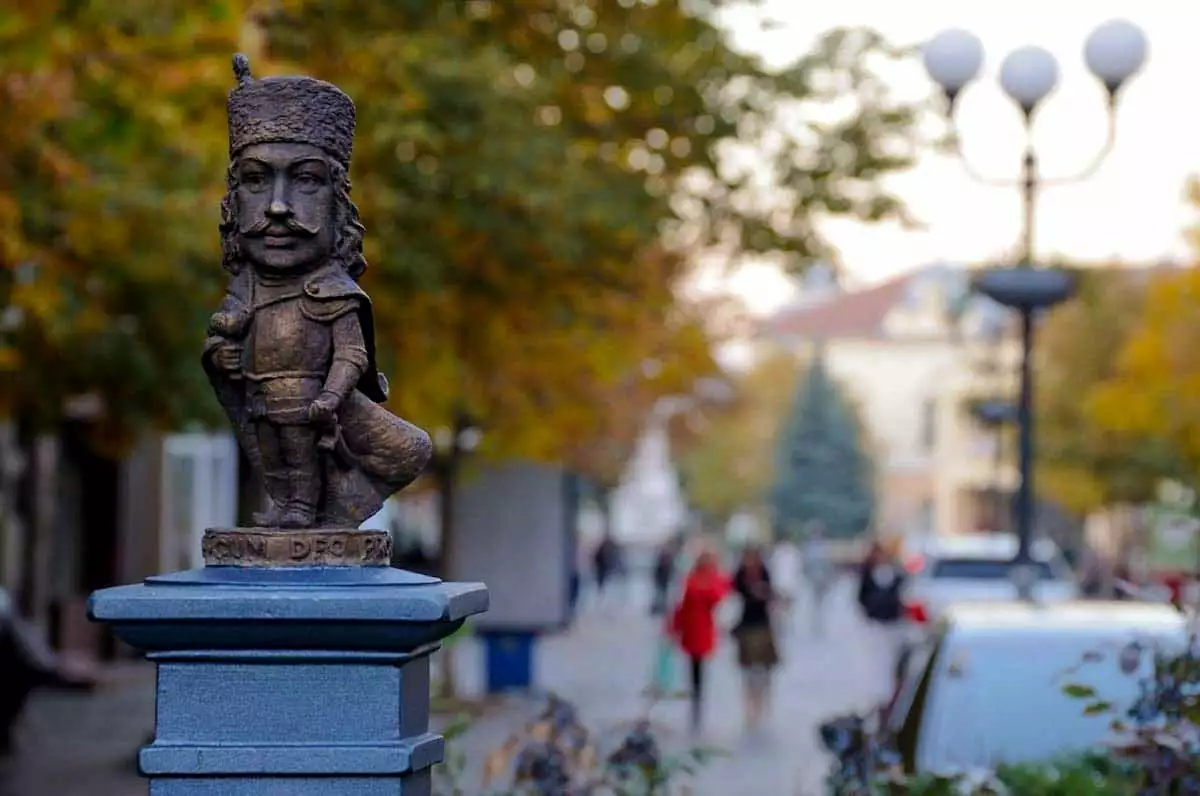
Author of the article: Viktor Shatrov
Number of articles: 1100+
Knowledge of languages:: Ukrainian, English
Favourite quote: “Travelling – the only thing that makes you richer“
He was born and lived all his life in Uzhhorod. He graduated with a gold medal from Uzhhorod School No. 1 named after Taras Shevchenko (now Uzhhorod Lyceum named after Taras Shevchenko). He studied at the History Department of UzhNU, graduating with honours in 2009. He worked as a senior researcher at the Transcarpathian Museum of Folk Architecture and Life, a lecturer at the East European Slavic University.